Late ripe high-yielding hybrid of cabbage Atria f1
Among the vegetable crops grown by Russian gardeners, cabbage is perhaps second only to potatoes. It is represented by a wide variety of varieties that differ in agrotechnical properties, taste, ripening times.
The late-ripening high-yielding hybrid Atria F1 is popular. It attracts both large farmers and gardeners, who have one garden bed for cabbage on 6 acres of their personal plot.
The content of the article
Description of cabbage Atria F1
The main advantages of the hybrid are high yield, softness and flexibility of leaves, as well as long-term storage on the vine. It is considered late ripening, it takes about 3 months for the crop to ripen after planting the seedlings.
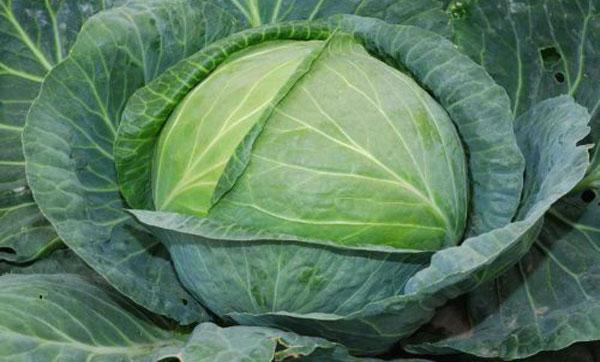
By the time of maturity, the heads of cabbage acquire a blue-green hue. When cut, they are greenish-white. The average weight reaches 5-8 kg. After collection, they are stored for about 6 months without losing taste.
Origin and development
The Dutch hybrid is the result of the work of breeders from Monsanto Holland B.V.. In the early 1990s, he received recognition in Russia and was recommended for planting in the Central Black Earth Region of the country. Since then, the seeds have gone on the mass market.

Chemical composition and useful properties
Vitamin content per 100 g:
- A - 3 μg;
- B1 - 0.03 mg;
- B2 - 0.07 mg;
- B4 - 10.7 mg;
- B6 - 0.1 mg;
- B9 - 22 mcg;
- C - 60 mg;
- E - 0.1 mg;
- K - 76 μg;
- PP - 0.9 mg.
Content of minerals and trace elements:
- potassium - 300 mg;
- calcium - 48 mg;
- phosphorus - 37 mg;
- chlorine - 37 mg;
- sulfur - 31 mg;
- magnesium - 16 mg;
- sodium - 13 mg.
Cabbage has anesthetic, anti-inflammatory, cleansing effect. Has antineoplastic, expectorant, healing properties. It is widely used in folk medicine.
The vegetable is used as a basis for many dishes, especially in Russian national cuisine. Cabbage is part of some diets. The high potassium content helps to strengthen muscles, including the heart.
Important! It is not recommended to use white cabbage for gastrointestinal diseases.
Application features
Cabbage is intended both for fresh consumption and for conservation. Growers point out that Atria F1 is one of the best harvesting hybrids. Thin, yet pliable and succulent leaves are ideal for pickling. The vegetable is good fresh, does not boil during cooking, keeps its shape and retains its crunch.
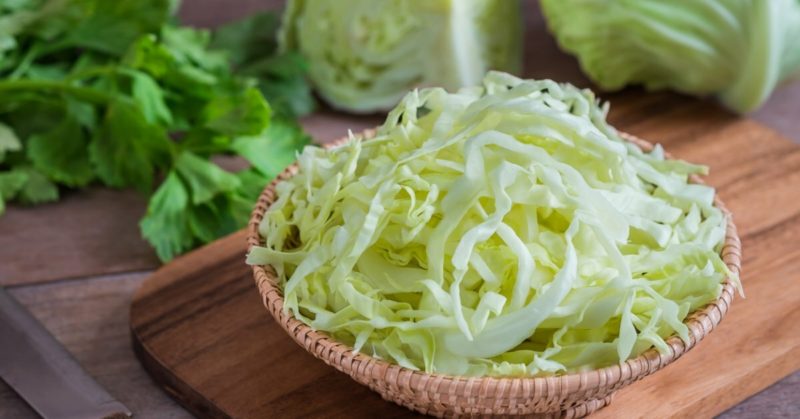
Ripening period and yield
The hybrid is considered late maturing. After planting the seedlings, the crop ripens within 3 months. The full growing season is from 135 to 145 days. The long wait is more than compensated for by the high yield. Large producers collect up to 100 tons of cabbage from 1 hectare of crops.
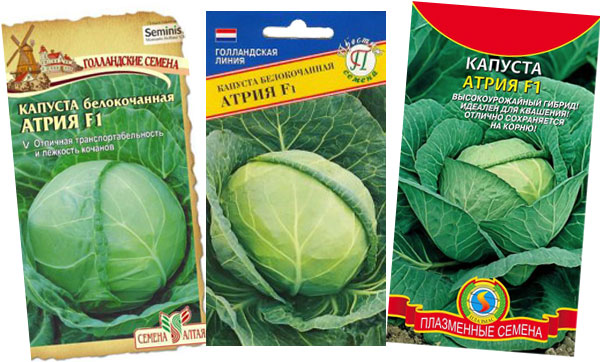
Resistance to negative factors
Cabbage can tolerate sudden night temperature drops of -7 ° C, although this negatively affects yields. The hybrid is recommended for planting almost throughout the territory of Russia, except for the northern regions. Resistant to most cabbage diseases and pests. Atria F1 is not affected by:
- fusarium wilting;
- gray rot;
- thrips.
Extremely poorly tolerated lack of moisture. Throughout the growing season, abundant watering is needed.With a water shortage, heads of cabbage do not tie well, grow small, remain loose, loose, with disheveled leaves. Drought leads to the death of the plant.
Characteristics and description of the plant
Gray-green leaves of medium size, half-raised in the rosette. Blistering is rarely seen. The leaf is wide, oval, the edges are even, without waves, with a pronounced waxy coating. The middle vein of the leaf is light green, concave. The forks are rounded flat or round. The outer sheets are green with a gray tint.
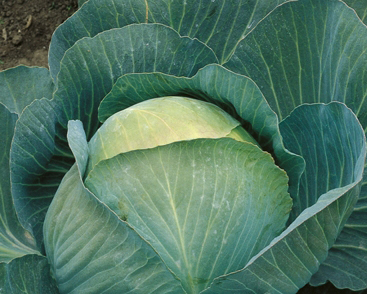
Advantages and disadvantages of the Atria F1 hybrid
Atria F1 has a long list of advantages, which made it so popular with summer residents and farmers. The main advantages of a hybrid include:
- record yields;
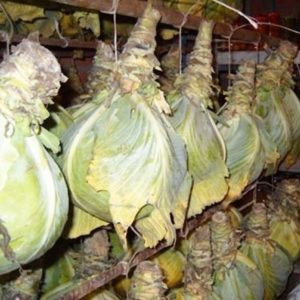
- high resistance to disease;
- good taste;
- friendly, simultaneous growth of seeds planted at the same time;
- high socket density;
- presentable presentation;
- the ability to endure even long-term transportation;
- mature heads of cabbage are not prone to cracking.
The disadvantages of this variety are much less:
- great need for water and strict requirements for the regime and volume of irrigation;
- loosening and hilling of the soil after watering is desirable;
- for growing, it is better to choose a spacious area with constant natural light, this condition can not be provided by all gardeners.
The main difference between Atria F1 and other late varieties is the inability to long-term storage. The hybrid lasts only 5-6 months from the date of harvest. Throughout the entire shelf life, the taste of cabbage is preserved.
Attention! If you observe the temperature regime, humidity and regularly sort out the harvest, Atria F1 is stored until the beginning of next summer.
Features of planting and growing
The hybrid can be grown by seed and seedling methods. To get a rich harvest, you need to pay attention to agricultural technology. When growing a hybrid Atria F1, they act according to the following scheme:
- Seed purchase... Don't buy last year's seeds. It is better to choose a product from a trusted manufacturer.
- Boarding time... With a seedless cultivation method, the seeds of Atria cabbage are sown in April. With the seedling method, it is worth waiting for the soil to warm up, the sprouts are planted between May 10 and 20.
- Choosing a landing site. Atria loves open, well-lit areas with fertile soil. In areas with unfavorable climatic conditions, a greenhouse is required for growing cabbage.
- Priming. Chernozem is ideal. In the non-chernozem area, the area for Atria F1 should be well fertilized. The optimum pH is 6.5-7.
- Landing. The row spacing is at least 60 cm, and if possible - 1 m, the distance between plants in a row is from 30 to 35 cm. Young shoots do not tolerate bright sun, therefore, it is better to plant in cloudy weather or in the evening. The sprout is deepened into the ground to the lower leaves. At the first time after planting, young plants are sheltered from the hot sun, and also sprayed with water 2-3 times a day.
- Temperature. Cabbage can grow at temperatures from +7 to + 20 ° C. But the optimal, comfortable range for vegetables is + 15… + 18 ° C.
- Watering. At the first time after planting, cabbage especially needs additional moisture, so the procedure is carried out every 2-3 days - about 8 liters of water per 1 m². After 2 weeks, the frequency of watering is reduced to 1 time per week, and the volume is increased to 13-15 liters per 1 m². Watered cabbage with warm water. Particularly closely monitor the observance of the water regime during the formation of heads of cabbage.
- Top dressing. The procedure is carried out 4 times per season. The first feeding - 20 days after planting: 2 tbsp. l. "Effekton" for 10 liters of water (0.5 liters of solution for 1 seedling). Next - after 10 days: 1 tbsp. l. "Kemir" for 10 liters of water (1 liter of solution for 1 seedling). In June: 20 g of potassium sulfate and 18 g of superphosphate per 10 liters of water (5-6 liters of solution per 1 m²). In August, 3 weeks before harvest: 15 g of nitrophoska per 10 liters of water (5-6 liters of solution per 1 m²).Fertilizers are applied to pre-moistened soil.
In addition to the activities already listed, Atria F1 requires hilling and loosening of the soil. The first hilling is carried out 3 weeks after planting, after another 14 days - the second. After watering, the ground around the cabbage is loosened to improve air circulation and oxygen supply to the roots.
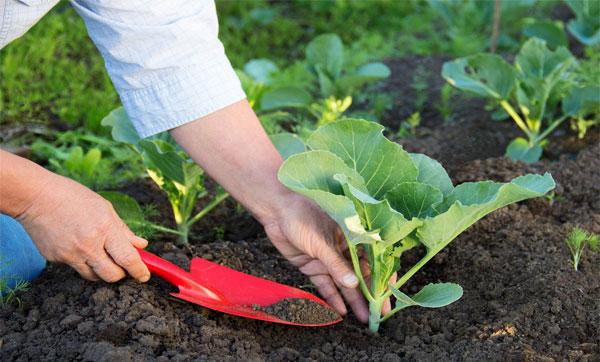
Growing difficulties
If the irrigation conditions are not observed, the harvest of Atria F1 suffers greatly. Heads of cabbage are poorly formed, do not reach average values of volume and weight, and are poorly stored. The leaves do not acquire their inherent plasticity. Many gardeners do not immediately understand that these are not disadvantages of the hybrid, but improper care has led to such consequences, and they refuse to continue growing.
It is interesting:
Early ripe cabbage hybrid Parel f1
High-yielding cold-tolerant hybrid of Tobia f1 cabbage
High-yielding medium-late hybrid of Megaton f1 cabbage with good keeping quality
Harvesting and storage
The harvest time for Atria F1 falls on October, when the air temperature is + 4 ... + 7 ° C. The heads of cabbage are pulled out by the roots, they wait for the upper leaves to dry out a little, then the root is cut off and placed in boxes or on shelves, stumps up.
Store at + 2 ° C and 93-97% humidity in a cellar or caisson. If there is not enough space, the cabbage is hung by tying the heads of cabbage by the stumps. Usually this hybrid is well stored for six months, but if all conditions are met, it does not lose quality until the beginning of summer.
Important! Only tight, dense forks are subject to storage, and it is better to immediately start up the looser ones for processing.
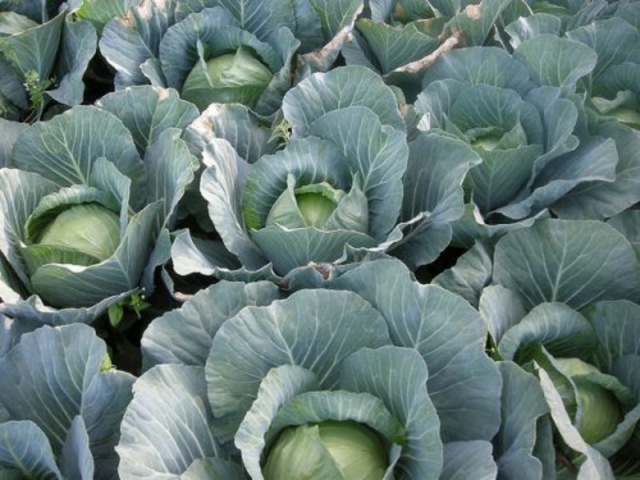
Advice and feedback from experienced gardeners
Over the years of growing Atria F1, gardeners have received both positive and negative experiences. In conversations with summer residents, you can get valuable advice on the cultivation of this particular hybrid. All of them in most cases boil down to strict adherence to the water balance and planting patterns.
Anatoly Ivanovich, Krasnodar Territory: “I started growing the Atria F1 cabbage variety in the early 90s, when it first appeared in stores, even the description could only be read on the seed package. For so many years I can consider myself a professional, I grow both seedlings and ready-made vegetables for sale. The harvest is always excellent. By the way, I don't harvest until early November, when the top layer starts to dry right in the beds. "
Irina Sergeevna, Moscow region: “I had a bad experience of growing cabbage of the Atria variety - I read a lot of positive reviews and, without studying the characteristics, decided to try it. And the cabbage grew small, loose. I thought that the heads of cabbage would never be tied. Since then she has not been imprisoned. I think I'll try again, I realized my mistakes. I planted seedlings too often - only 35-40 cm between rows, and 25 cm between heads of cabbage. They simply had nowhere to gain the required volume. "
It is interesting:
Conclusion
Cabbage Atria F1 is universal for different regions of Russia, withstands temperature fluctuations, but requires special attention to watering and lighting. Subject to the rules of success in growing a hybrid, even novice gardeners will achieve.